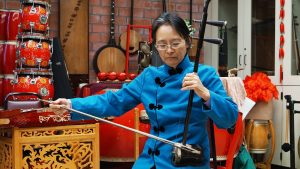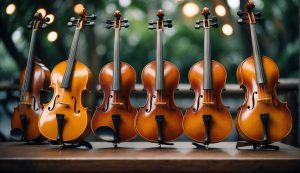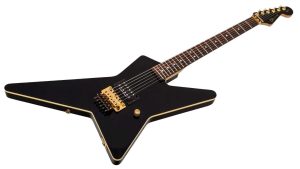Folkstrings.com is reader-supported. When you buy through links on our site, we may earn a small commission.
Traditional Korean string instruments have played an important role in Korean culture for centuries. These instruments have been used in various settings such as court music, folk music, and even in modern-day K-pop music. Korean string instruments include those that are plucked, bowed, and struck. Most Korean string instruments use silk strings, except as noted.
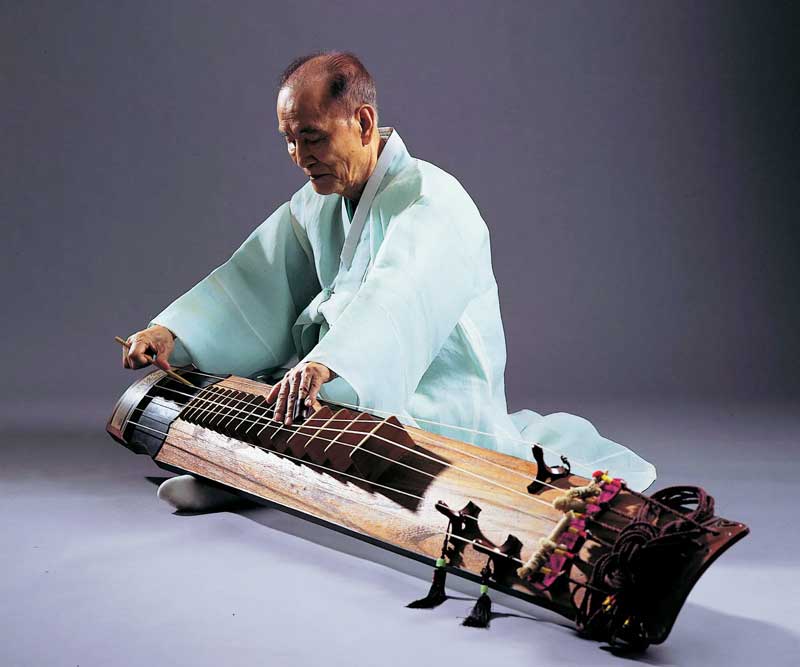
Quick Summary
One of the most well-known Korean string instruments is the gayageum, a traditional Korean plucked zither with 12 strings. However, more recent variants have 18, 21 or 25 strings.
The gayageum has been used in various genres of Korean music, from classical to folk and even modern pop music.
Other popular Korean string instruments include the geomungo, a large six-stringed zither, and the haegeum, a two-stringed fiddle.
These instruments not only produce unique sounds but also have significant cultural value.
Traditional Korean string instruments are often played during important ceremonies and events. They are also an important part of Korean identity and have been recognized by UNESCO as an intangible cultural heritage of humanity.
As such, they continue to be an important part of Korean culture and music today.
History of Korean String Instruments
Korean string instruments have a rich history that dates back to the Silla Dynasty, which lasted from 57 BC to 935 AD. Since then, these instruments have been an integral part of Korean culture, used in both court and traditional music.
Below is a brief overview of the history of Korean string instruments:
Silla Dynasty
During the Silla Dynasty, string instruments were primarily used in court music. The most popular instrument of the time was the geomungo, a long zither with six strings. It was used to accompany dances and was often played by court musicians.
Court Music
During the Joseon Dynasty, which lasted from 1392 to 1910, court music became more sophisticated and complex. The gayageum, a long zither with 12 strings, became the most popular instrument of the time. It was used to play both court and folk music and was often played by female musicians.
Traditional Music
Traditional Korean music is divided into two categories: folk music and classical music.
- Folk music is played on a variety of string instruments, including the ajaeng, a bowed zither with seven strings, and the haegeum, a two-stringed fiddle.
- Classical music is played on the gayageum and other zithers, as well as wind instruments and percussion.
Today, Korean string instruments continue to be an important part of the country’s cultural heritage. They are played in both traditional and modern contexts and are enjoyed by people all over the world.
Types of Korean String Instruments
Korean string instruments are an integral part of traditional Korean music. They are classified based on the method of sound production.
Here are some of the most popular types of Korean string instruments:
Geum
Geum is a type of Korean string instrument that is plucked. It is similar to the Chinese guzheng and the Japanese koto.
The instrument has a rectangular body made of paulownia wood and is played by plucking the strings with a plectrum.
The geum has twelve strings, and each string is tuned to a different pitch. It is often used as an accompaniment to vocal music and dance performances.
Gayageum
The gayageum is a long zither with twelve strings. It is one of the most popular Korean string instruments and is often used in traditional Korean music.
The instrument is made of paulownia wood and has movable bridges that allow the player to adjust the pitch of each string.
The gayageum is played by plucking the strings with the fingers or a plectrum. Modern versions of the gayageum may have up to 25 strings.
Ajaeng
The ajaeng is a type of Korean string instrument that is played with a bow. It has a rectangular body made of paulownia wood and has seven strings.
The strings are made of twisted silk and are tuned to different pitches. The ajaeng is played by bowing the strings with a horsehair bow.
The instrument has a deep, resonant sound and is often used as an accompaniment to vocal music and dance performances.
Yanggeum
Yanggeum is a traditional Korean hammered dulcimer that has a long history dating back to the Goryeo dynasty (918–1392).
The instrument consists of a wooden soundboard with strings stretched over it and is played using two bamboo sticks with soft leather tips.
Yanggeum produces a bright, metallic sound and is often used in Korean traditional music ensembles, particularly for folk music and court music.
It has undergone various changes in its design and construction over the centuries, but it remains an important part of Korea’s musical heritage and cultural identity.
Other Korean Musical Instruments
Korean music has a rich history that dates back centuries.
Apart from the string instruments, there are several other musical instruments that are unique to Korea.
Here are some of the most popular Korean musical instruments:
Hun

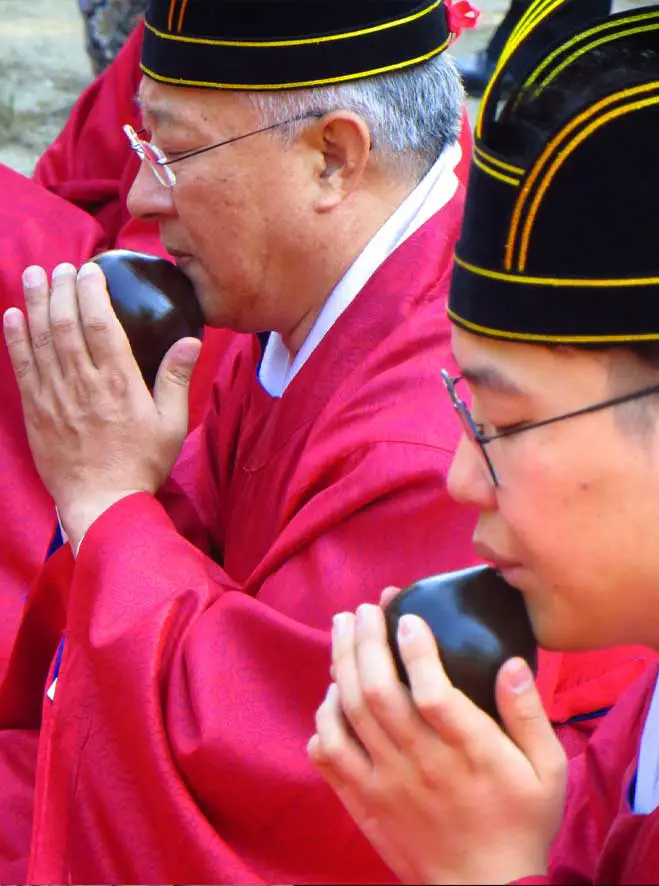
The hun, a traditional Korean musical instrument, is a close relative of the Chinese xun. It was introduced to Korea in the 12th century by the Song dynasty of China as a gift to King Yejong of Goryeo.
The instrument started being produced in Korea in the 15th century. Made of clay, the hun is usually black and comes in three main shapes: the egg, hemisphere, and ball. It has a blowing hole on top and five finger holes.
The range of the hun is an octave, and it has a dark timbre similar to the ocarina. The hun is primarily used in court music ensembles to play ceremonial music to honor Confucius.
It represents the earth and plays together with the ji, a flute. The hun has been used in this capacity since the 12th century. In the late 20th century, some contemporary Korean composers began to use it in their compositions and film scores.
Piri
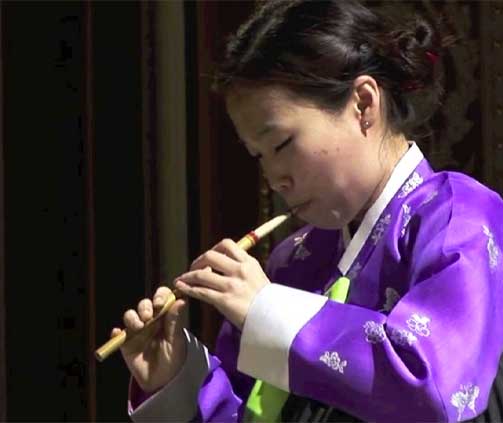
The piri is a Korean double reed instrument used in both folk and classical (court) music. It was originally from Central Asia and was introduced to Korea from China during the Three Kingdoms period, specifically in the states of Goguryeo and Baekje.
The instrument is made of bamboo and has a large double reed, and its cylindrical bore gives it a mellower sound compared to other types of oboe.
A typical piri has eight finger holes, with four different types suited for various music types.
The hyang piri is the most common and loudest, usually playing the main melody in an ensemble. The se piri is quieter and used with voices or soft stringed instruments.
The Dang piri is similar to the Chinese guanzi, and the North Korean dae piri is a modernized version with keys and a bell.
To play the piri, the player sits upright, pulls their chin slightly, and straightens their back to breathe easily. It is believed that the piri was introduced to Korea from Kucha, a Buddhist oasis state of Central Asia, before the Goguryeo period.
The piri’s equivalent in China is the guan, and its counterpart in Japan is the hichiriki.
Bak
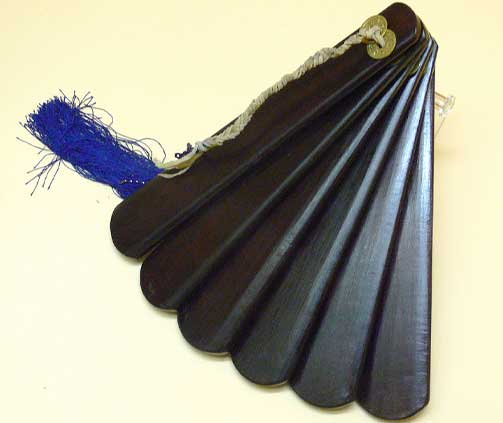
The bak is a wooden clapper that plays a crucial role in Korean court and ritual music, serving as a conductor or musical supervisor for the group.
The person playing the bak is called jipbak, and the instrument is used to indicate when the music starts, creating a clapping sound when struck.
The bak is made of six flat wood boards, tied together at one end with string or cord to make a fan shape. It has been used since the Unified Silla period for conducting and instructing the progress of music and dance.
The jipbak uses the bak to conduct the group, sounding it when the music starts and ends with three claps, and when significant changes occur.
Janggu
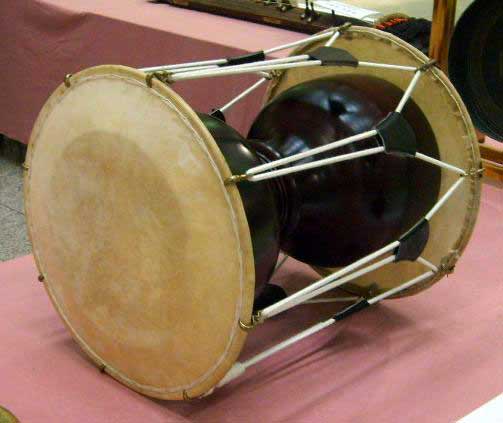
The Janggu is a type of Korean drum that is played with two sticks. It has a unique sound that is often described as dynamic and powerful.
The Janggu is often used in traditional Korean music and is often played during important ceremonies and festivals.
These are just a few of the many unique musical instruments that are found in Korean music. Each instrument has its own unique sound and is often used to create beautiful and complex melodies.
Whether you are a fan of traditional Korean music or simply appreciate the beauty of music, these instruments are sure to impress.
Construction of Korean String Instruments
Tuning
Korean string instruments are tuned in various ways depending on the instrument. The gayageum, for example, is tuned to a pentatonic scale, while the haegeum uses a mix of pentatonic and chromatic scales. The tuning process is crucial to the sound of the instrument and requires precision and expertise.
Materials
Most Korean string instruments use silk strings, except for some modern versions that use nylon or steel strings. The bodies of the instruments are typically made from paulownia wood, chestnut, or a combination of both. These woods are chosen for their acoustic properties and durability.
The strings themselves are made from high-quality silk, which is believed to produce a warmer and more natural sound than synthetic materials. However, some modern instruments use nylon or steel strings, which are more durable and easier to maintain.
Construction
The construction of Korean string instruments is a highly skilled and labor-intensive process. The wood is carefully selected and treated to ensure that it is free from any defects or imperfections that could affect the sound quality.
The body of the instrument is then carved and shaped to the desired specifications, taking into account the unique sound characteristics of each instrument. The strings are carefully attached and tuned to the correct pitch, and the instrument is then tested and adjusted until it produces the desired sound.
Overall, the construction of Korean string instruments is a complex and intricate process that requires a high level of skill and expertise.
Playing Korean String Instruments
Technique
Playing Korean string instruments requires a certain level of skill and technique. The player needs to have a good understanding of how to hold the instrument and how to use both hands to create the desired sound.
For instance, when playing the gayageum, the left hand is used to press the strings to raise the pitch, while the right hand is used to pluck or strum the strings.
The player can also perform various movements such as shaking, bending, and vibrating the strings to create different sounds.
Similarly, when playing the janggu, the player needs to hold the drum with one hand and use the other hand to strike the drumhead with a stick.
The player can also use the other end of the stick to strike the rim of the drum to create a different sound.
Tone
Korean string instruments are known for their soft, delicate, and subtle tone. The tone of the instrument can vary depending on the material used to make the instrument and the technique used to play it.
For example, the gayageum is made of paulownia wood and has silk strings, which give it a soft and delicate tone. The janggu, on the other hand, is made of animal skin and has a deeper and more resonant tone.
Playing Korean string instruments requires a good understanding of the instrument and the technique used to play it.
With practice and dedication, one can master the art of playing these beautiful instruments and create a wide range of sounds and tones.
Comparison to Other Asian String Instruments
Korean string instruments, such as the gayageum and the ajaeng, have a unique sound and playing style that sets them apart from other string instruments in Asia.
However, there are some similarities and differences between Korean string instruments and those of other Asian countries, such as Japan and China.
Japanese Koto
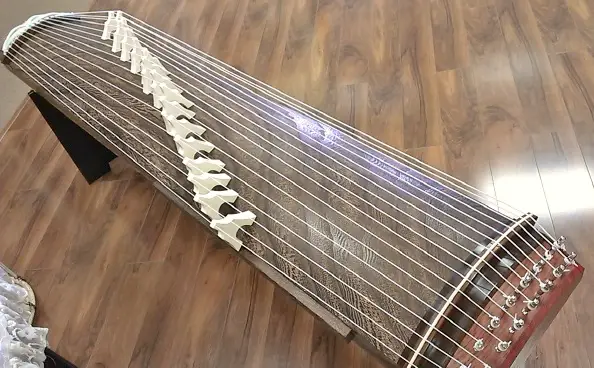
The Japanese koto is a traditional Japanese stringed musical instrument that is similar to the gayageum in terms of its construction and playing style.
The koto has 13 strings that are strung over 13 movable bridges along the length of the instrument. The strings are plucked with picks worn on the thumb, index, and middle fingers of the right hand.
The left hand is used to change the pitch of the strings by pressing them against the bridges.
One key difference between the koto and the gayageum is the number of strings. The gayageum has 12 strings, while the koto has 13 strings.
Additionally, the koto is often played in an ensemble, while the gayageum is typically played solo or as part of a small ensemble.
Chinese Zither
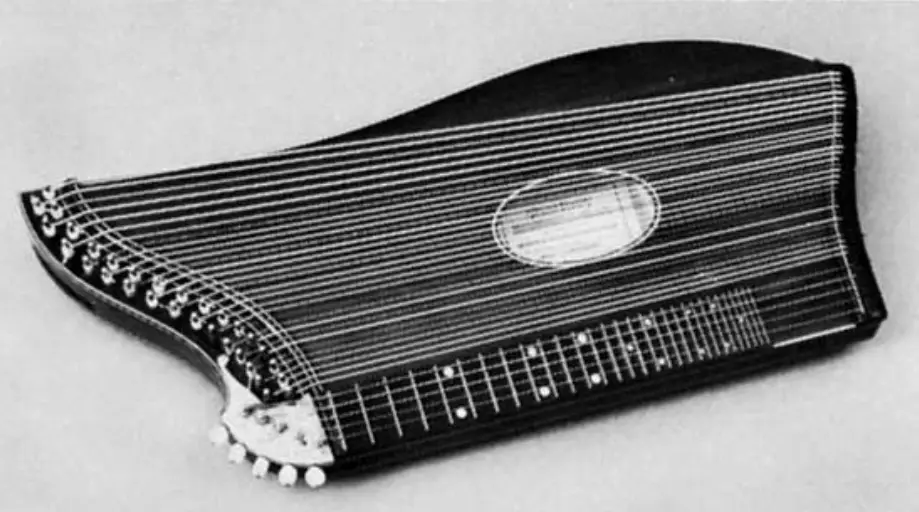
The Chinese zither, also known as the guzheng, is a traditional Chinese stringed musical instrument that is similar to the gayageum in terms of its construction and playing style.
The guzheng has 21 strings that are strung over movable bridges along the length of the instrument. The strings are plucked with picks worn on the fingers of the right hand, while the left hand is used to change the pitch of the strings by pressing them against the bridges.
One key difference between the guzheng and the gayageum is the number of strings. The guzheng has 21 strings, while the gayageum has 12 strings. Additionally, the guzheng is often played in an ensemble, while the gayageum is typically played solo or as part of a small ensemble.
Another difference is the tuning of the strings. The guzheng is tuned to a pentatonic scale, while the gayageum is tuned to a heptatonic scale. This gives the two instruments a different sound and playing style.
Conclusion
Traditional Korean string instruments are an integral part of the country’s rich musical culture. With their unique sounds and playing techniques, these instruments have been used for centuries in various musical genres, including court music, folk music, and contemporary music.
Each instrument has its own distinct characteristics, from the plucked and bowed zithers to the struck percussion instruments.
The Gayageum, with its 12 strings, is one of the most recognizable Korean instruments, while the Ajaeng produces sounds when its strings are pulled with a bow.
The Geomungo, a plucked zither with both bridges and frets, is another representative stringed instrument made in Goguryeo before the 5th century.
Today, traditional Korean music and instruments continue to thrive, with concerts and performances held both domestically and internationally.
These events not only showcase the beauty of Korean music but also promote cultural exchange and understanding between nations.
Overall, traditional Korean string instruments represent a unique aspect of Korean culture, with their intricate designs and sounds. They continue to play an important role in the country’s musical landscape, and their popularity is likely to endure for generations to come.
Author Profile
-
Daniel Johnstone is an English writer with a love for stringed instruments from around the world.
He shares his love for these instruments through his writing for folkstrings.com, a website dedicated to all things related to folk string music.
Daniel's passion for music started at a young age, and he has since become an accomplished musician, playing guitar, cavaco, and recently, the harp.
His dedication to learning and sharing his knowledge of stringed instruments is evident in his insightful and engaging blog posts. Whether you're a seasoned musician or a beginner, Daniel's writing is sure to inspire and entertain you.
When he's not playing music or writing, you can find Daniel exploring new instruments and seeking out new sounds to share with his readers.
Latest entries
 AutoharpApril 4, 2024Is Autoharp Easy to Play? Unveiling the Truth for Beginners
AutoharpApril 4, 2024Is Autoharp Easy to Play? Unveiling the Truth for Beginners AutoharpApril 4, 2024What Is an Autoharp Worth? Your Guide to Pricing and Value
AutoharpApril 4, 2024What Is an Autoharp Worth? Your Guide to Pricing and Value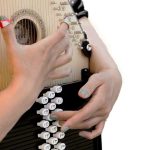 AutoharpApril 4, 2024Where Is the Best Place to Buy an Autoharp? Your Top Picks Reviewed
AutoharpApril 4, 2024Where Is the Best Place to Buy an Autoharp? Your Top Picks Reviewed AutoharpApril 4, 2024How Does the Autoharp Work? – Unveiling Its Melodic Secrets
AutoharpApril 4, 2024How Does the Autoharp Work? – Unveiling Its Melodic Secrets


